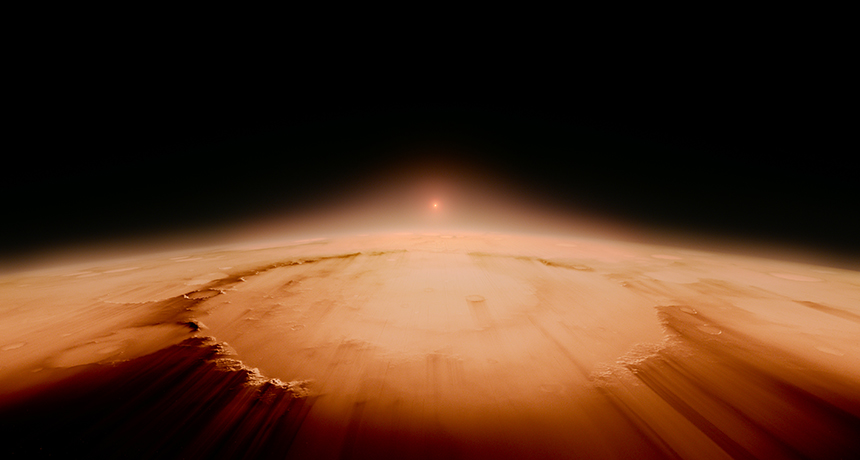‘Voyage of Time’ is Terrence Malick’s ode to life

Condensing billions and billions and billions of years into a 45-minute film is a tall order. But director Terrence Malick took on the challenge with Voyage of Time. The film, now playing in IMAX theaters, surveys the 13.8-billion-year history of the universe and even looks eons into the future when we — life on Earth, the planet and the entire solar system — are gone.
Starting with the Big Bang, Voyage of Time progresses through highlights of the past, with a central focus on the evolution of life. Malick, best known for directing visually rich dramas such as The Thin Red Line and The Tree of Life, presents breathtaking cinematography, using locales such as Hawaii’s lava-oozing Kilauea volcano as stand-ins for the past. Stunning visualizations and special effects bring to life the formation of the planets, the origin of the first cells, the demise of the sun and other events that scientists can only imagine.
The film marks Malick’s first attempt at documentary filmmaking. If you can call it that. Viewers hoping for a David Attenborough–style treatment of the subject matter will be disappointed. The film is more evocative, with moody scenes that provide little explication. And what narration (by Brad Pitt) there is tends to be philosophical rather than informative.
Serious science enthusiasts may find some reasons to quibble with the movie. For one, it’s hard to grasp the true immenseness and scale of cosmic time. With so much screen time devoted to the evolution of life, many viewers may not realize just how relatively recent a phenomenon it is. After the Big Bang, more than 9 billion years passed before Earth began to form. It took many hundred thousand more years before the first microbes emerged.
Malick’s treatment of evolution may also rankle some viewers. At times, the narration seems to imply life was destined to happen, with the young, barren Earth just waiting around for the first seeds of life to take root. At other times, the narration imbues evolution with purpose. Pitt notes, for instance, that perfecting a leaf took eons. Yet perfection is something evolution neither achieves nor strives for — it’s a process that lacks intentionality.
These critiques aside, Malick sought to tell an accurate story, enlisting an accomplished group of scientists as advisers, including Lee Smolin of the Perimeter Institute for Theoretical Physics in Waterloo, Canada. Smolin says he was impressed with the end result. “It’s a very unusual film,” he says, likening it to a visual poem or piece of art.
And that’s probably the best mindset to watch Voyage of Time: Just sit back, soak in the dazzling visuals and contemplate the wonders of nature.